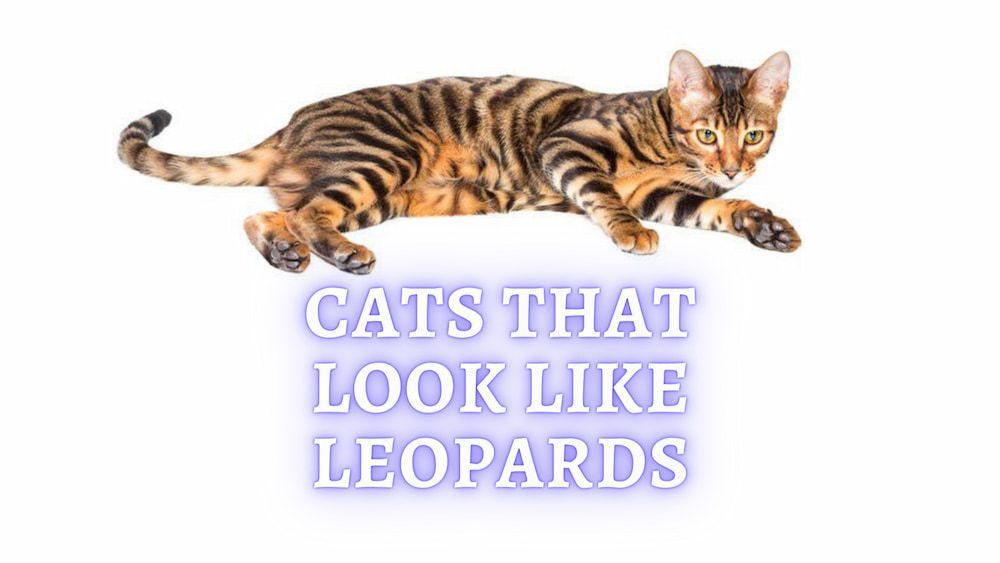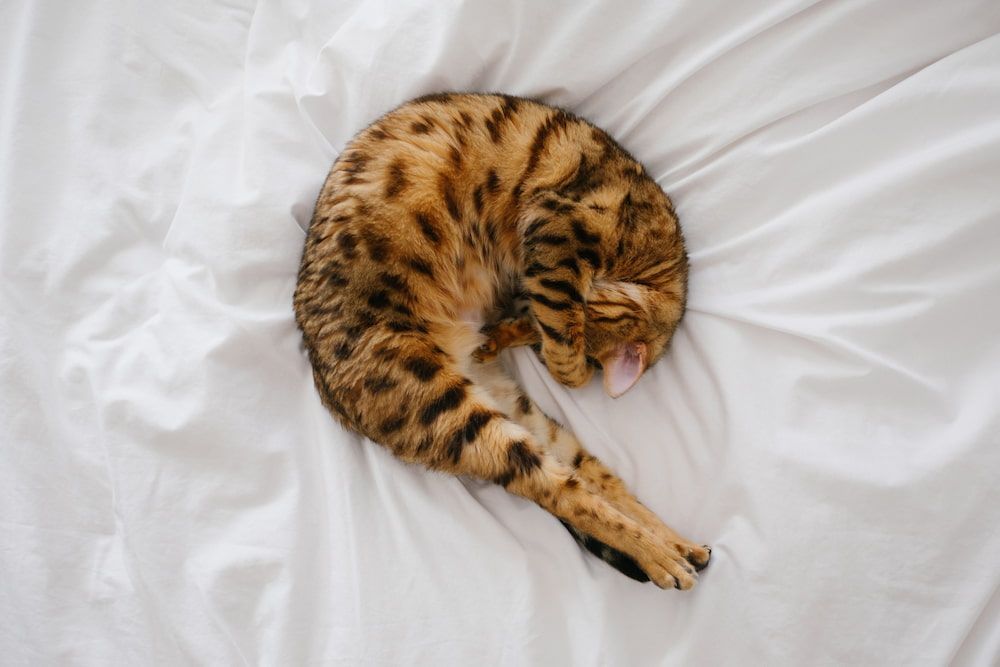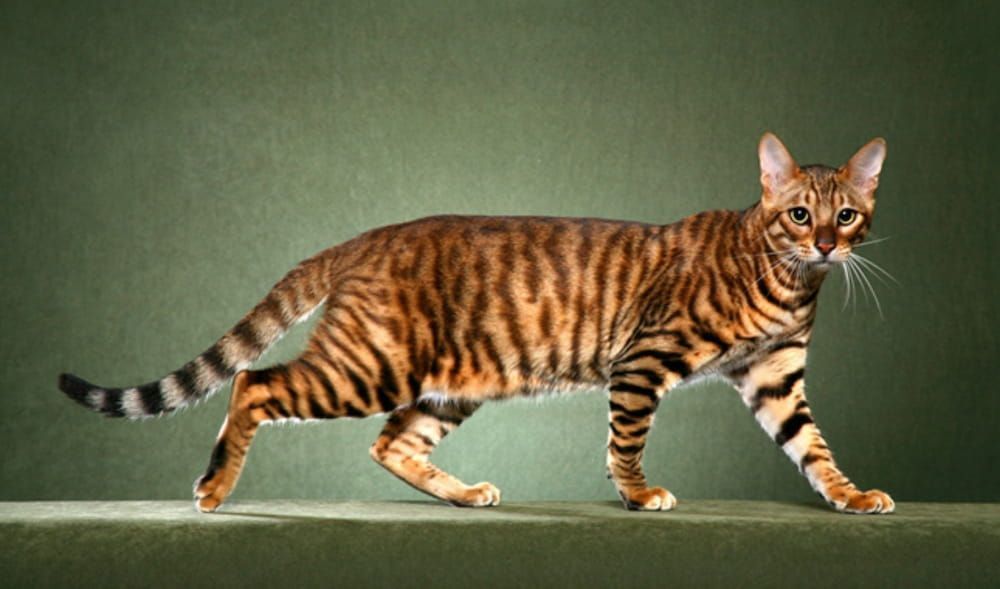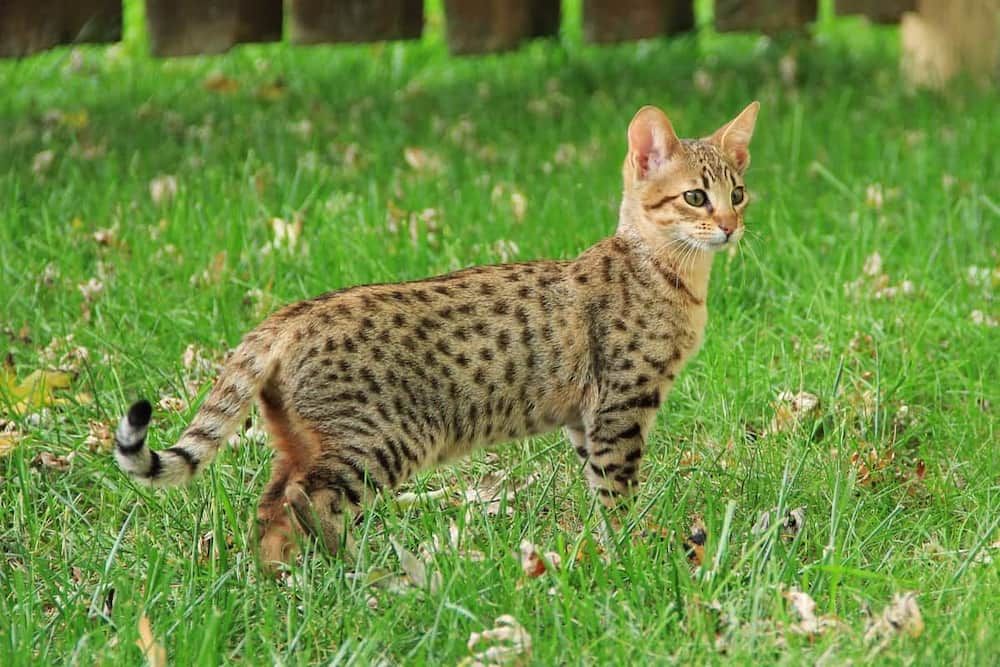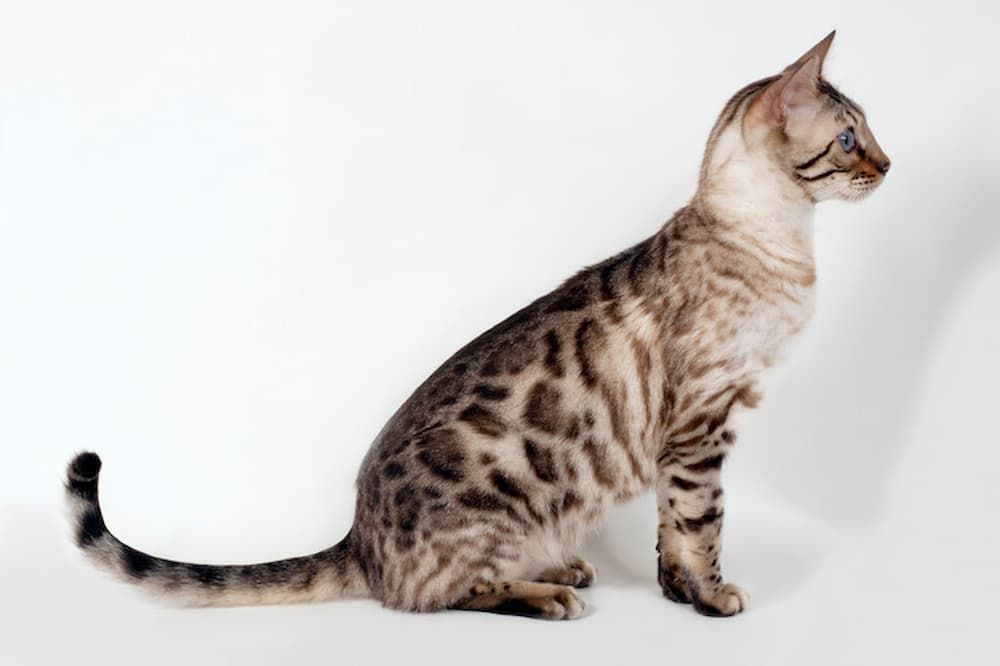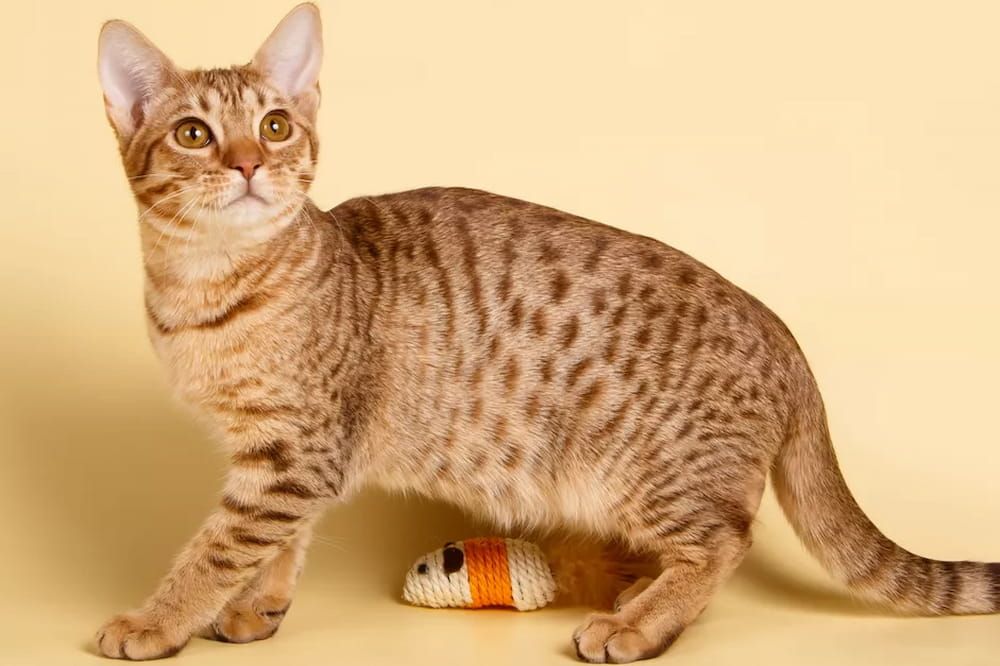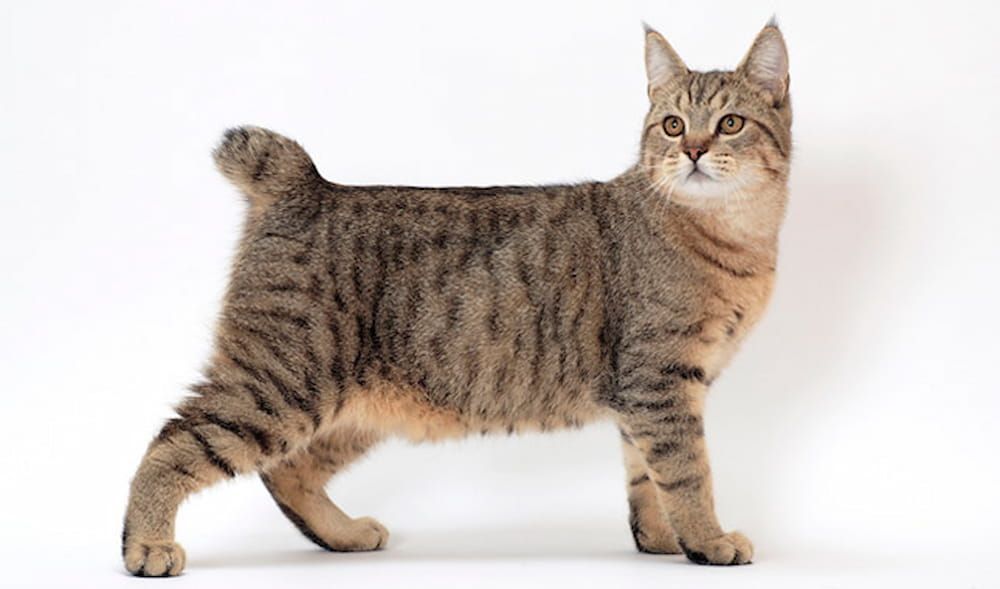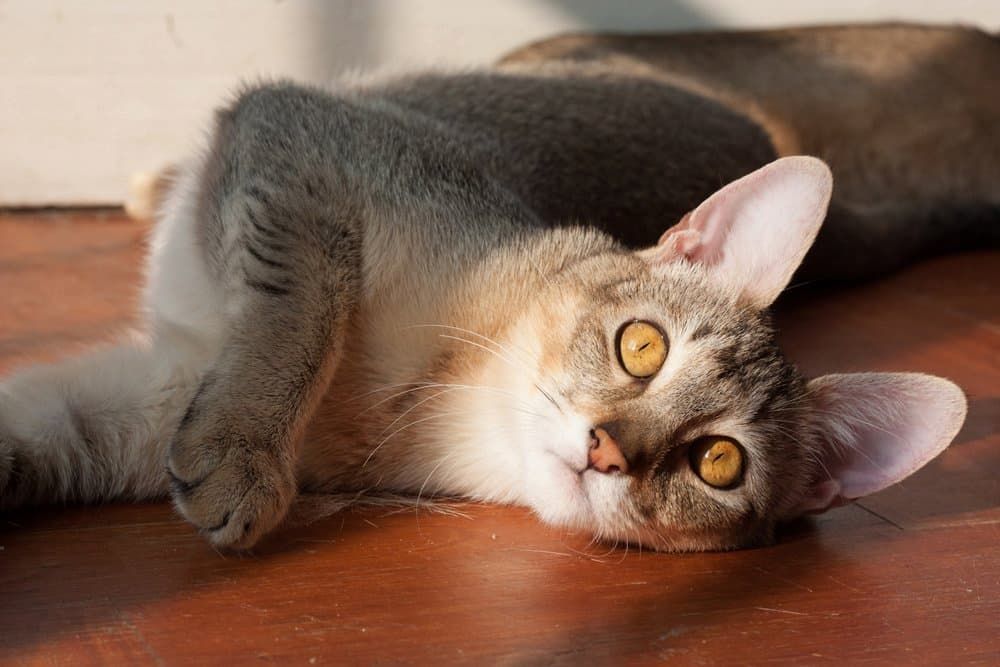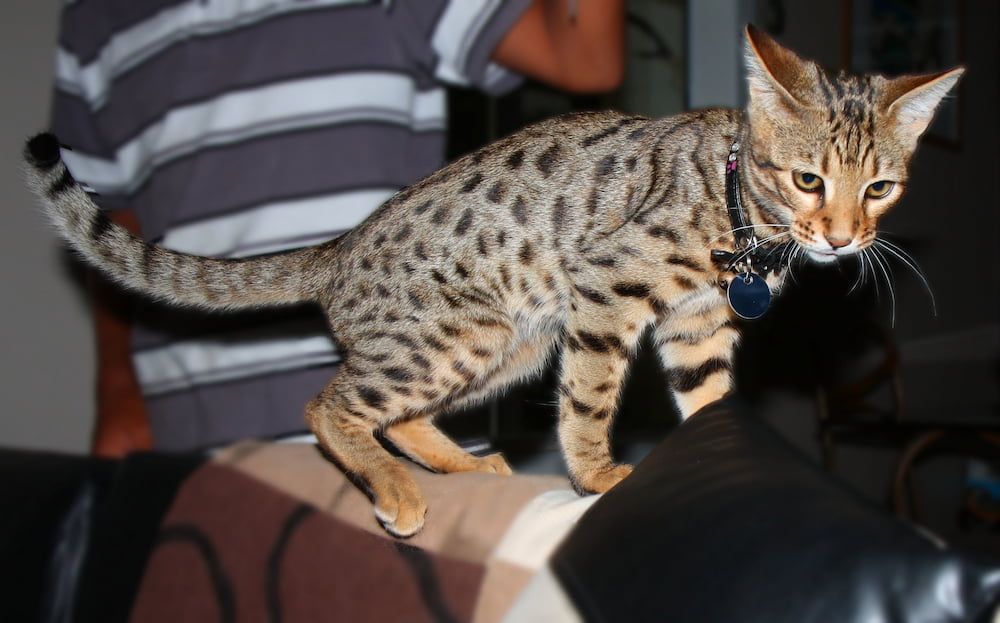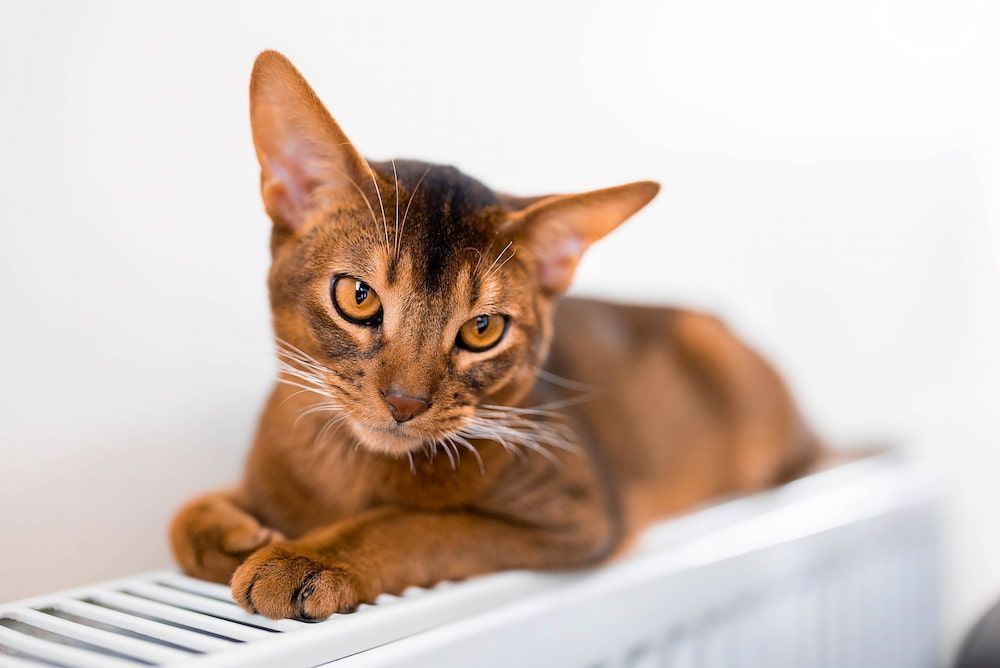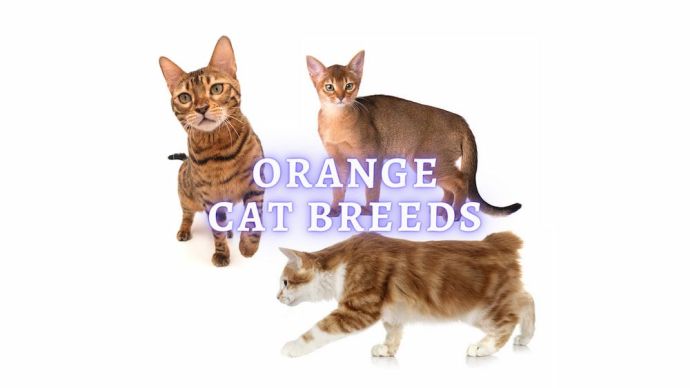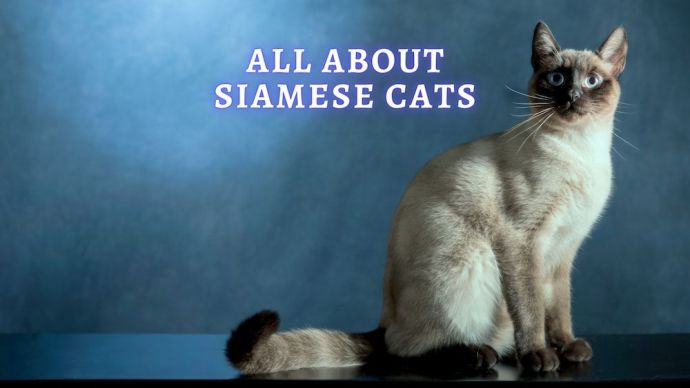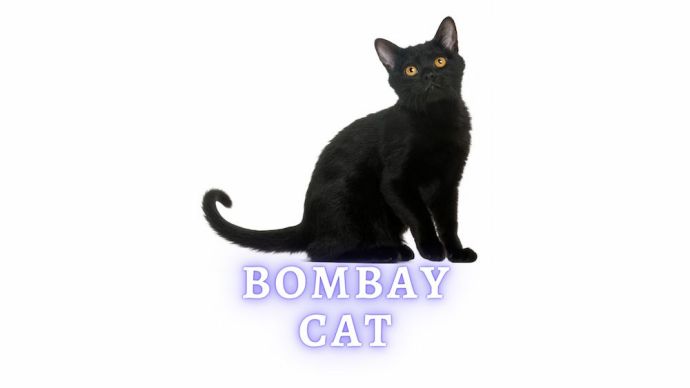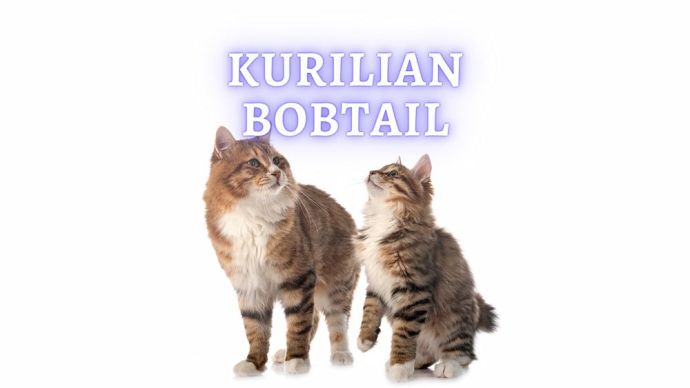Cats That Look Like Leopards: 10 Cat Breeds That Look Exactly Like Leopards
Written by:
Author: Vicki Smirnova
Vicki Smirnova is a professional writer and editor who adores animals and helps readers get along well with their pets. She has been working in digital media for more than 5 years and has great experience writing content about lifestyle, including pets. Vicki specializes in dog health and nutrition, cat feeding, dog training. She is an aquarium lover and is passionate to write about fish care at home. Also, Vicki headed several websites and worked as a news editor.
View all 244 articlesLearn about our editorial process and veterinary review board.
Viewed: 648
Updated on: 05/12/2023
Dreaming of a pet mini leopard? Then this article is for you. Here is a collection of breeds of domestic cats with leopard color.
The spotted, as well as the striped, color, is due to the presence of a unique gene T (tabi). It allows pets to look like their wild relatives. The spots in such cats are always darker than the main color of the coat, and markings may be round or marbled. [1]
People have always been in awe of cats resembling wild animals, so breeders are continually working to develop new breeds that – more and more – resemble small leopards. But there are also natural breeds, the characteristic features of which are spots on the fur.
1. Bengal
This hybrid breed is derived from an Asian leopard cat and a domestic cat. Work on the breed has been carried out since 1961, and today, the breed is recognized worldwide.
Hybrids from the 4th generation are considered domestic. Initially, there was only a “golden” color – black spots on a reddish background. A distinctive feature in any color is a short, smooth, tight-fitting coat with a glittery sheen.
The Bengal cats are very neat and take care of their fur. But you must pay attention to this pet, as the coat’s condition depends on the cat’s health. So, regular medical examinations and anti-parasite treatments are a necessity. [2]
READ MORE: Best Cat Food for Bengals
2. Toyger
A very close relative of the Bengal, Toygers have as many color variations as Bengals and a wild appearance. Toygers have a short coat that does not require much attention – it is enough to comb the fur weekly with a soft brush or furminator.
This is an incredibly calm and balanced breed. Toygers do not rush around the house but prefer to move measuredly, as befits tigers (albeit tiny ones). These are friendly cats with a light and forgiving character, and they get along well with small children as well as with other animals.
Toygers easily adapt to any condition. They will feel great both in a small city apartment and in a spacious country house. Toygers love heights; therefore, when organizing a place for an animal in the house, take this into account and, if possible, several tiers should be made so that the cat can jump and climb.
READ MORE: Toyger Cat Breed
3. Savannah cat
A hybrid of a serval and an Abyssinian cat, this breed was officially recognized in 2001 and is the largest and most expensive of the domestic cats. There are several options for the color of the savannah: silver, gold, chocolate, and brown. All have leopard spots inherited from wild ancestors.
Savannah is a graceful cat that boasts a wonderful coloration. It is very similar to its wild counterpart, the African serval. Since they first appeared back in the eighties, Savannahs have become one of the most popular exotic cats, not only in the US but also in other parts of the world.
Cats of this breed are very attached to their family. Savannahs can be taught to walk on a leash. Savannahs require regular care – brush its coat every week to keep them in good condition. Trim its nails if necessary. This breed loves the water, so allow them to take a bath or swim in the water. Please note that cats of this breed do not like the cold, so be sure to keep it indoors during the winter.
4. Serengeti
A breed created as a result of the hybridization of the Bengal cat and Orientals, the Serengeti is a rather rare breed. In the US, the Serengeti has received the status of “miniature domestic serval.” It was this breed that Karen Southman, a breeder from California, planned to breed. In the early 1990s, when she was the director of a wildlife sanctuary, she fell in love with servals so much that she decided to create a breed of cats resembling wild predators. As the first parent, Karen chose a Bengal cat because this breed has a bright color. And the second parent was an Oriental shorthair, or, in other words, an oriental cat. Their distinguishing features are graceful bodies, large ears, and long paws.
Serengeti has not only a memorable appearance but also a wonderful character. They inherited the best qualities from their parents: they are just as intelligent and talkative. There are a lot of different sounds in the repertoire of Serengeti cats, and, in addition to the usual “meow,” they can quack and grunt.
These pets are real hunters – very active and energetic. A pet of this breed will be happy with a new toy. The Serengeti can jump up to two meters high. The short coat of the Serengeti does not require careful care, and during the molting period, it is enough to comb the cat two to three times a week with a special comb brush to remove the fallen fur. Also, do not forget to cut your pet’s claws and brush teeth.
READ MORE: All About Serengeti Cats
5. Ocicat
These cats resemble a wild ocelot, hence the name of the breed. But the breed has nothing to do with wild animals. The breed was obtained in the US from the Abyssinian and Siamese cats.
Ocicats are very smart and learn quickly, and owners must be prepared that the cat will learn how to press handles and open doors and drawers. This is a very energetic and active breed. Ocicats love to play and move around a lot, and they are great at jumping and quickly climbing cabinets and trees. They need a multi-level space for games, although these animals feel quite comfortable in a city apartment. The main thing is that there should be a special place where the cat can expend a lot of energy.
When deciding whether or not to purchase an Ocicat, it is important to know that a cat of this breed should only be adopted if the owner is ready to provide it with enough attention and communication. These cats should not be left alone – they do not tolerate it well. These pets distinguish one person from others and become incredibly attached to their owner.
6. Egyptian Mau
This is one of the oldest cat breeds. Over the millennia, the breed has undergone natural changes, but it was the ancestors of the Mau that the ancient Egyptians worshiped.
These animals have different colors – silver, bronze, smoke, and tin – but always with spots and only dark in color. Interestingly, there are spots not only on the coat but also on the skin.
Maus love to sit up high and look around. They usually behave as if they are in complete control of the environment. They are extremely strong and very active. At the same time, they have a very balanced character.
The Egyptian Mau is an athletic cat that can control its diet on its own if given enough opportunities for full activity. These pets are excellent jumpers and climbers and should have their own perches and trees.
READ MORE: 16 Grey Cat Breeds
7. Pixiebob
The Pixiebob resembles a miniature lynx but is very different in character, despite the outward resemblance to a wild relative. This breed is a kind and calm pet and makes good contact with children. Due to its devotion and love for its owner, the Pixiebob has been jokingly compared to a dog.
The Pixiebob has interesting physiology. Today, it is the only cat breed that is allowed to have a sixth toe (it is located on the back of the paw, above the wrist). Also, this breed has a short tail (like a lynx). They owe this feature to short-tailed forest wild cats that lives in North America.
The nature of the pet is very similar to that of a dog. They easily get used to a leash and even learn commands. Cats of this breed are friendly and affectionate and do not show aggression, even towards strangers. They become strongly attached to their owners and yearn in their absence.
These cats love to play and can do so at any time. However, at the same time, Pixiebobs are jealous and unfriendly towards other animals.
8. Chausie
The first Chausie appeared in ancient Egypt, when wild cats interbred with their domestic relatives. However, this relationship received real recognition only at the end of the 20th century, when American breeders got down to business. It was they who came up with the idea to create a breed that outwardly resembled a wild cat but had an absolutely domestic character. Wild reed cats and domestic cats participated in the breeding process, among which the Abyssinian breed became the main one. Chausie was officially registered in 1995 with TICA.
Despite the attempts of breeders to remove the “wild traits” of character, it cannot be said that Chausie is a completely domestic cat. While Chausies are very sociable and can become attached to a person, at the same time, they are quite capricious and independent. This cat will sit on its paws only when it wants to. At the same time, Chausies need to communicate and cannot be left alone for a long time.
As you would expect, Chausies easily get along with other animals, including dogs. These cats are not afraid; on the contrary, they are happy to try to get close and make friends.
READ MORE: Chausie Cat Breed
9. Cheetoh
This breed, a Bengal and Ocicat mix, are very obedient, kind pets that are strongly attached to people. The breed is only 15 years old. Chetohs are large cats, weighing up to 22 pounds. They are very energetic, smart and easy to train, so they do not cause problems. Their thick, velvety coat can be 6 colors, but spots or rosettes are always present.
Cheetohs have a soft, crouching gait, characteristic of cheetahs and tigers, a calm character and obedience rare for cats.
10. Abyssinian
While this breed got its name in honor of Abyssinia, which was once the name of modern Ethiopia, it first appeared, most likely, in Egypt. Images of these animals can be found on the tombs of the pharaohs.
There is also a mention of Abyssinian cats in the Egyptian Book of the Dead. The ancient Egyptians attributed the character of Abyssinian cats to their goddess Bastet. The first representatives of the breed came to Europe in the 19th century. The breed was officially recognized in 1882.
The owner should be prepared for the fact that this cat will always be suddenly nearby. It will actively participate in everything. Sometimes, such excessive activity can be annoying, but it is impossible to re-educate an Abyssinian. This is perhaps the most energetic cat breed in existence.
FAQ
What breed of cat looks like a leopard?
There are many breeds that are similar in color to leopards: Bengals, Toyger, Savannah, Serengeti, Ocicat.
What kind of cat looks like a cheetah?
Savannah is a domestic cat that looks like a cheetah, although it was actually bred from a wild African serval. These large cats are listed in the Guinness Book of Records as the tallest domestic cat.
Article Sources:
- Coates, Jennifer, and DVM Coates. 7 Common Genetic Disorders in Cats. 11 Feb. 2021, petmd.com/cat/slideshows/7-common-genetic-disorders-cats#slide-1.
- ”Bengal Breed”. TICA.org. The International Cat Association. August 13, 2018. Archived from the original on July 26, 2020. Retrieved March 8, 2019. tica.org/bengal-breeders?view=article&id=824:bengal-breed&catid=79.
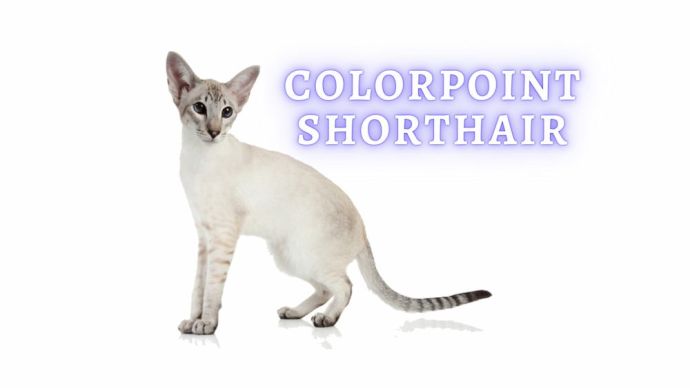 Cat Breeds Colorpoint Shorthair: Colorpoint Shorthair Cat Breed History, Temperament and Personality
Cat Breeds Colorpoint Shorthair: Colorpoint Shorthair Cat Breed History, Temperament and Personality - 252
- 0
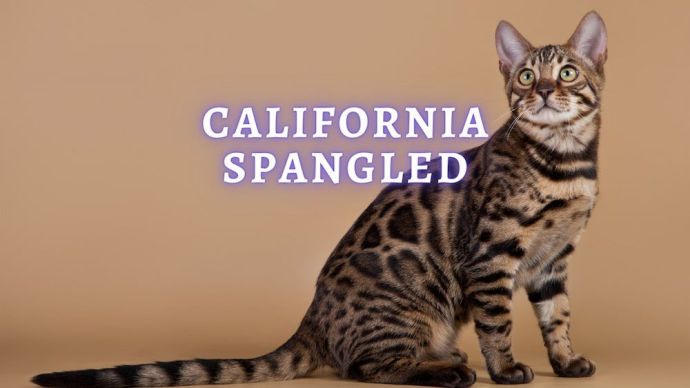 Cat Breeds California Spangled: California Spangled Cat Personality, Breed History, and Interesting Facts
Cat Breeds California Spangled: California Spangled Cat Personality, Breed History, and Interesting Facts - 313
- 0
 Cat Care Why Does My Cat Attack My Legs? 10 Reasons Why and What To Do About It (Vet-Approved Advice)
Cat Care Why Does My Cat Attack My Legs? 10 Reasons Why and What To Do About It (Vet-Approved Advice) - 46013
- 21
 Cat Veterinary Tips Cat Stomach Gurgling: Vet Advice on Why is Your Cat Stomach Gurgling?
Cat Veterinary Tips Cat Stomach Gurgling: Vet Advice on Why is Your Cat Stomach Gurgling? - 36469
- 4
 Cat Veterinary Tips My Cat Lost its Voice: Can Cats get Laryngitis? (Vet Advice)
Cat Veterinary Tips My Cat Lost its Voice: Can Cats get Laryngitis? (Vet Advice) - 23554
- 13









